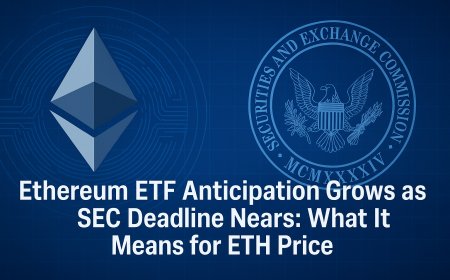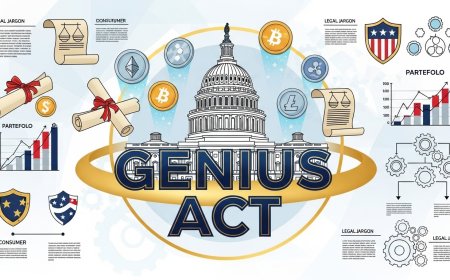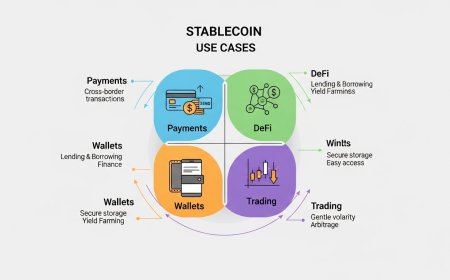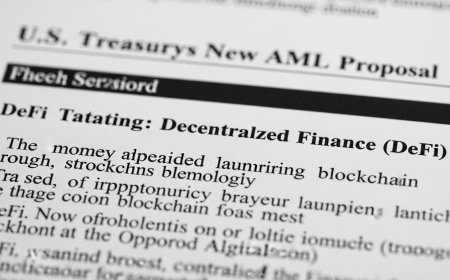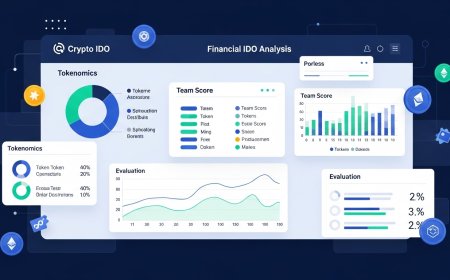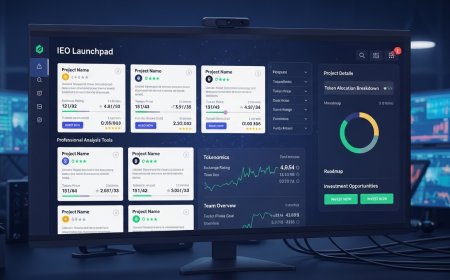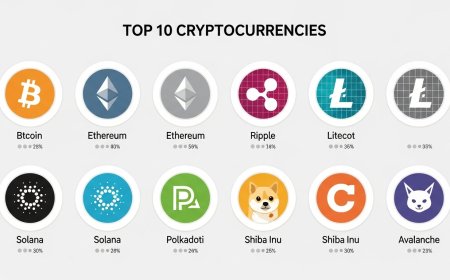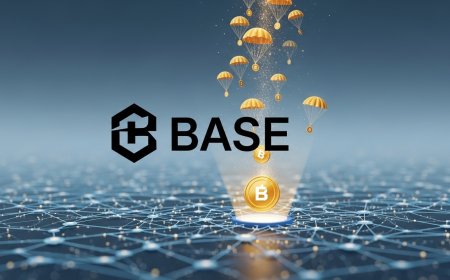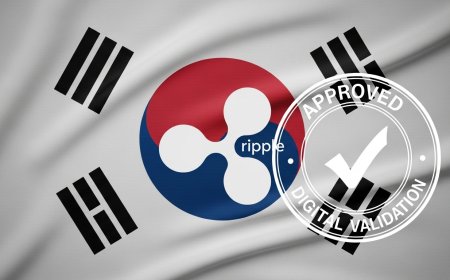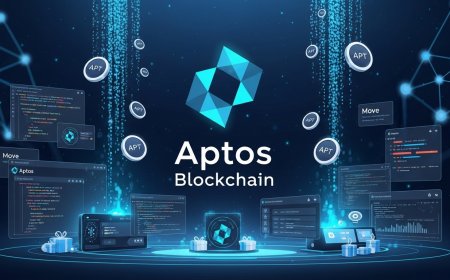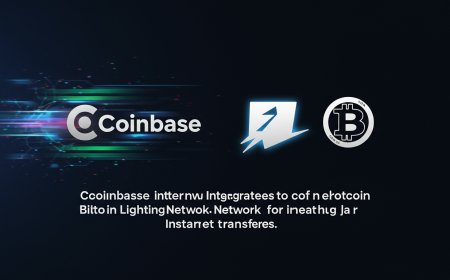Arbitrum DAO Airdrops $ARB to Early Governance Voters
Arbitrum rewards $ARB to early DAO participants to incentivize long-term decentralized governance.

Arbitrum DAO's $ARB Token Airdrop: Incentivizing Governance Participation and Decentralization
Overview
The Arbitrum DAO's distribution of $ARB tokens represents one of the most significant governance token airdrops in the cryptocurrency ecosystem, marking a pivotal transition from centralized control to decentralized autonomous organization (DAO) governance. In March 2023, the Arbitrum Foundation announced the launch of the Arbitrum DAO and its native governance token, ARB. Airdropped on March 23, ARB is the ERC-20 governance token, allowing holders to participate in the Arbitrum DAO's on-chain governance protocol.
ARB is the governance token of Arbitrum, a Layer 2 scaling solution for Ethereum. Launched in March 2023 by Offchain Labs, ARB allows holders to vote on important decisions about Arbitrum's future development, establishing a decentralized governance system for the platform. This airdrop was not merely a token distribution but a strategic initiative to democratize governance and create a sustainable framework for community-driven decision-making.
The airdrop was part of a broader vision to transition Arbitrum from a centralized development model to a fully decentralized autonomous organization. $ARB was created with an initial supply of 10 Billion. The DAO can choose to increase the supply by at most 2% per year via a core proposal; March 15, 2024 will be first date on which one of these minting events becomes possible. ... The $ARB token is the governance token of the Arbitrum DAO.
Purpose and Strategic Objectives
The primary purpose of the $ARB token airdrop was to establish a decentralized governance framework that would enable the Arbitrum community to collectively make decisions about the protocol's future development. Learn about the $ARB governance token, a special-purpose digital asset that gives its holders the ability to vote on on-chain proposals that affect the operation and evolution of the Arbitrum DAO and the technologies it governs.
The airdrop served multiple strategic objectives:
Democratic Governance Implementation: By distributing tokens to active users and early adopters, the airdrop aimed to create a diverse and engaged governance community. This approach ensured that decision-making power would be distributed among stakeholders who had demonstrated genuine engagement with the platform rather than being concentrated among a small group of large investors.
Incentivizing Long-term Participation: The airdrop rewarded users who had actively participated in the Arbitrum ecosystem, encouraging continued engagement and investment in the platform's success. ARB's primary utility is governance, but this creates several value drivers for the token: Governance Rights: ARB holders have direct influence over the platform's future, creating demand among users who want a voice in its development. Ecosystem Alignment: By giving governance power to token holders, the platform aligns user incentives with the protocol's long-term success.
Decentralization of Control: The transition from centralized control by Offchain Labs to community governance represented a fundamental shift in how the protocol would evolve. The airdrop was designed to distribute governance power broadly across the user base, preventing any single entity from dominating decision-making processes.
Eligibility Criteria and Distribution Methodology
The Arbitrum DAO implemented a sophisticated points-based system to determine airdrop eligibility and allocation amounts. In essence, Arbitrum's airdrop criteria adopted a points-driven system linked to users' engagement with the network. Each participant could earn up to 15 points. This approach ensured that tokens were allocated to those who actively interacted with the blockchain, rather than being distributed randomly.
User Eligibility Requirements
The eligibility criteria were designed to reward genuine user engagement and prevent gaming by automated systems. Key requirements included:
Bridge Activity: Having funds bridged to the network is often a key requirement. For Arbitrum specifically, users who bridged to Arbitrum One or Nova and completed multiple transactions were considered. Users needed to have bridged funds from Ethereum mainnet to Arbitrum, demonstrating their commitment to using the Layer 2 solution.
Transaction Activity: Users were required to have conducted multiple transactions on the Arbitrum network, indicating active participation rather than passive holding. This requirement helped ensure that tokens went to genuine users rather than speculative addresses.
Temporal Requirements: The airdrop considered the timing and duration of user activity, favoring users who had engaged with the platform over extended periods rather than those who participated only briefly before the announcement.
Anti-Sybil Measures
To prevent abuse and ensure fair distribution, the Arbitrum Foundation implemented comprehensive anti-Sybil measures. To prevent bots from taking advantage of the airdrop, a number of anti-Sybil rules were established: If an airdrop recipient's wallet showed patterns consistent with automated activity or had characteristics suggesting it was part of a coordinated farming operation, it would be excluded from the distribution.
Distribution Amounts
The airdrop allocation was structured to reward different levels of engagement proportionally. Thus, the minimum airdrop entitlement is 625 tokens, half of the minimum entitlement in the table above; the maximum airdrop entitlement is 10,250 tokens. This range ensured that all eligible users received meaningful amounts while providing additional rewards for more active participants.
$ARB is set to go live with a maximum supply of 10 billion tokens, with a capped inflation rate of 2% annually. According to their site, 11.62% of this, or 1.16 billion tokens, have been set aside for airdrops to reward Arbitrum users. This allocation represented a significant portion of the total token supply, demonstrating the commitment to community ownership.
Claim Process and Participation Rates
Eligible users can claim tokens by visiting the Arbitrum Website. To claim the $ARB token airdrop, users need to have used Arbitrum and interacted with blockchain with several specific criteria. The list of eligible wallets represents 625,143 addresses or ~28% of those having bridged to Arbitrum.
The relatively low eligibility rate of 28% of bridge users reflected the stringent criteria designed to reward genuine engagement. Arbitrum DAO takes $56M of unclaimed ARB as airdrop deadline ends, indicating that not all eligible users claimed their tokens, which allowed the DAO to reclaim unclaimed tokens for future use.
Governance Incentive Structure
The $ARB token airdrop was specifically designed to create a robust governance incentive structure that would encourage active participation in the DAO's decision-making processes. The token distribution mechanism aligned individual incentives with collective governance goals through several key features:
Voting Weight Distribution: By distributing tokens based on engagement rather than wealth, the airdrop created a more democratic distribution of voting power. This approach helped prevent governance capture by large holders and encouraged broader participation in governance decisions.
Delegation Mechanisms: The governance system included delegation features that allowed token holders to delegate their voting power to more active participants, creating a representative democracy structure within the DAO framework.
Proposal Mechanisms: ARB token holders gained the ability to submit proposals for protocol changes, upgrades, and resource allocation decisions, creating a direct channel for community input into platform development.
Early Governance Challenges and Community Response
The initial governance period following the airdrop revealed both the potential and challenges of decentralized governance. The vote ended on Monday with more than 76% of votes cast against the proposal. The AIP-1 proposal, which the Arbitrum DAO submitted for a community vote on March 27, let holders of the recently airdropped ARB governance token indicate their support or opposition on a package of proposals.
This early governance controversy highlighted several important aspects of the transition to decentralized governance:
Community Oversight: The rejection of AIP-1 demonstrated that the community was actively engaged in governance and willing to challenge proposals they disagreed with, indicating that the decentralization objectives were being achieved.
Governance Process Evolution: The controversy led to improvements in the governance process, including better communication, more transparent proposal mechanisms, and enhanced community consultation procedures.
Stakeholder Alignment: The governance disputes revealed the need for better alignment between different stakeholder groups and clearer communication about governance objectives and procedures.
Significance for Decentralized Autonomous Organizations
The Arbitrum DAO's airdrop represents a landmark case study in DAO governance token distribution, providing valuable insights for the broader cryptocurrency ecosystem. The initiative demonstrated several key principles that have influenced subsequent DAO launches:
Merit-Based Distribution: The focus on rewarding genuine user engagement rather than wealth accumulation set a precedent for more equitable token distribution mechanisms in the DeFi space.
Governance Readiness: The comprehensive preparation for governance transition, including documentation, processes, and community education, established best practices for DAO launches.
Long-term Sustainability: The capped inflation mechanism and governance-controlled token emission created a sustainable tokenomics model that balanced growth incentives with value preservation.
Impact on the Cryptocurrency Ecosystem
The Arbitrum DAO airdrop had far-reaching implications for the broader cryptocurrency ecosystem, influencing both technical development and governance practices across the industry:
Layer 2 Adoption: The successful governance transition helped establish Arbitrum as a leading Layer 2 solution, encouraging greater adoption of Ethereum scaling technologies and influencing development practices across the ecosystem.
Governance Innovation: The governance mechanisms developed for the Arbitrum DAO have been studied and adapted by other projects, contributing to the evolution of decentralized governance practices.
Tokenomics Evolution: The points-based distribution system and anti-Sybil measures have influenced how other projects approach token distribution, leading to more sophisticated and equitable airdrop mechanisms.
Community Reactions and Market Impact
The community response to the Arbitrum DAO airdrop was generally positive, with users appreciating the comprehensive approach to governance transition and the significant value of the token distribution. Key community reactions included:
Positive Reception: The airdrop was widely celebrated as one of the most valuable and well-executed token distributions in cryptocurrency history, with many users receiving tokens worth thousands of dollars.
Governance Engagement: The airdrop successfully encouraged active governance participation, with high voter turnout in early governance proposals and significant community engagement in governance discussions.
Market Validation: The strong market performance of ARB tokens following the airdrop validated the approach and demonstrated significant investor confidence in the decentralized governance model.
Long-term Implications and Future Outlook
The Arbitrum DAO airdrop has established important precedents for decentralized governance and community ownership in the cryptocurrency space. The success of the governance transition has encouraged other major protocols to consider similar approaches to decentralization.
Governance Maturation: The ongoing development of governance processes and community engagement mechanisms continues to evolve, with lessons learned from early governance challenges informing improvements to the system.
Ecosystem Development: The governance token has enabled community-driven development initiatives, grant programs, and ecosystem growth initiatives that would not have been possible under centralized control.
Regulatory Considerations: The governance token model has also provided insights into regulatory approaches to decentralized protocols, with the community governance structure potentially offering advantages in terms of regulatory compliance.
Conclusion
The Arbitrum DAO's $ARB token airdrop represents a significant milestone in the evolution of decentralized governance and community ownership in the cryptocurrency ecosystem. By rewarding genuine user engagement and creating a comprehensive governance framework, the airdrop successfully transitioned one of the most important Layer 2 protocols from centralized control to community governance.
The sophisticated eligibility criteria, comprehensive anti-Sybil measures, and thoughtful tokenomics design have established best practices for future DAO launches. The initial governance challenges and community responses have provided valuable lessons for the broader cryptocurrency community about the realities of decentralized governance.
As the Arbitrum DAO continues to evolve and mature, the success of its governance token distribution will likely influence how other major protocols approach decentralization and community ownership. The airdrop has demonstrated that it is possible to create meaningful decentralized governance structures that effectively represent community interests while maintaining the technical excellence and innovation that made the protocol successful in the first place.
What's Your Reaction?
 Like
0
Like
0
 Dislike
0
Dislike
0
 Love
0
Love
0
 Funny
0
Funny
0
 Angry
0
Angry
0
 Sad
0
Sad
0
 Wow
0
Wow
0









